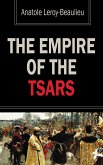In a former volume we considered at length the condition of Central Europe at the close of the period known as the Middle Ales. It will suffice here to recapitulate in a few paragraphs the general position. The time was out of joint in a very literal sense of that somewhat hackneyed phrase. Every established institution — political, social, and religious — was shaken and showed the rents and fissures caused by time and by the growth of a new life underneath it. The empire — the Holy Roman — was in a parlous way as regarded its cohesion. The power of the princes, the representatives of local centralised authority, was proving itself too strong for the power of the emperor, the recognised representative of centralised authority for the whole German-speaking world. This meant the undermining and eventual disruption of the smaller social and political unities, the knightly manors with the privileges attached to the knightly class generally. The knighthood, or lower nobility, had acted as a sort of buffer between the princes of the empire and the imperial power, to which they often looked for protection against their immediate overlord or their powerful neighbour — the prince. The imperial power, in consequence, found the lower nobility a bulwark against its princely vassals. Economic changes, the suddenly increased demand for money owing to the rise of the “world-market,” new inventions in the art of war, new methods of fighting, the rapidly growing importance of artillery and the increase of the mercenary soldiery, had rendered the lower nobility, as an institution, a factor in the political situation which was fast becoming negligible. The abortive campaign of Franz von Sickingen in 1523 only showed its hopeless weakness. The “Reichsregiment,” or imperial governing council, a body instituted by Maximilian, had lamentably failed to effect anything; towards cementing together the various parts of the unwieldy fabric. Finally, at the “Reichstag” held in Nürnberg, in December, 1522, at which all the estates were represented, the “Reichsregiment,” to all intents and purposes, collapsed...
Bitte wählen Sie Ihr Anliegen aus.
Rechnungen
Retourenschein anfordern
Bestellstatus
Storno









